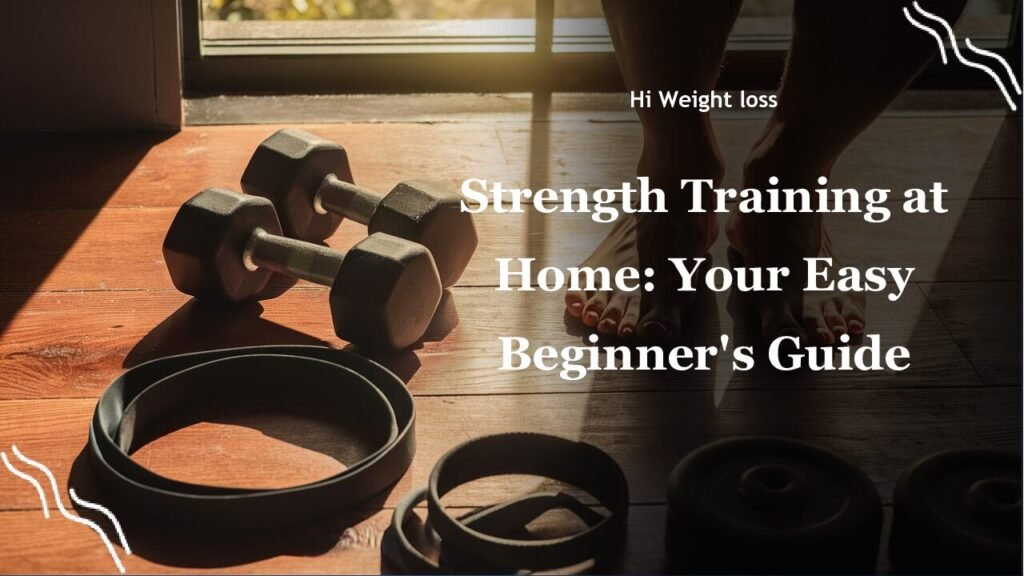“`
Starting strength training can feel overwhelming, especially when you’re unsure how often to hit the gym; pushing too hard can lead to injury or burnout, while not training enough might stall your progress, which is frustrating for anyone looking to make a change. This article will clear up the confusion around training frequency for beginners, so you can confidently build strength and achieve your fitness goals by focusing on the recommended training frequency to maximize your muscle gains while allowing for sufficient recovery.
How Many Times a Week Should a Beginner Strength Train?
If you’re new to strength training, figuring out the right frequency is crucial. I remember when I first started, I was tempted to go every day, thinking more was better. However, I quickly learned that rest and recovery are just as important as the workouts themselves. Experts recommend that beginners should aim for 2 to 3 strength training sessions per week. This frequency strikes the ideal balance between stimulating muscle growth and allowing your body to repair and rebuild.
Why 2-3 Times a Week is the Sweet Spot for Beginners
The reason for this recommendation comes down to how your muscles adapt to the stress of weightlifting. When you lift weights, you’re essentially creating microscopic tears in your muscle fibers. It’s during the recovery period that your body repairs these tears, making your muscles stronger and bigger. If you don’t give your body enough time to rest, you risk overtraining, which can lead to injuries, fatigue, and reduced performance. Men’s Health points out that in your first year, “just about any amount of training will trigger gains,” but stresses the importance of recovery.
On the other hand, not training frequently enough may slow your progress. You won’t be providing enough stimulus for your body to build muscle. You need to find a consistent frequency that allows your muscles to grow and repair. That is why the 2-3 times a week approach is the perfect sweet spot. This approach lets you build strength without overdoing it. Think of it as a consistent, sustainable strategy for progress.
Understanding Muscle Recovery
Muscles don’t grow during your workouts. Instead, they grow during recovery. Nerd Fitness highlights that beginners need “to allow their muscles time to recover and adapt to the new demands of strength training.” Proper recovery allows for muscle repair and growth, so adequate rest between sessions is key. You want to have at least one day of rest between workout days, maybe more, if you are very sore.
I remember when I first started; I would wake up feeling stiff all over and have delayed-onset muscle soreness (DOMS) quite often. It took me a while to understand that it was my body telling me that I needed to rest, and I definitely benefited from paying attention to those signals. I learned quickly that it was important to listen to my body and adjust my training frequency accordingly.
Structuring Your Weekly Workouts
Now that you know the ideal frequency is 2-3 times a week, let’s discuss how you can structure your training week. A common approach is to do full-body workouts each session. This way, you hit all the major muscle groups during each training day. Consider spacing your workouts out evenly to give your body the time it needs to repair. For instance, you could do Monday and Thursday, or maybe Tuesday, Thursday, and Saturday.
The National Strength and Conditioning Association (NSCA) recommends that resistance training days should be nonconsecutive to “allow for appropriate recovery between sessions.” This ensures that you’re not training the same muscles on consecutive days, which could lead to overtraining. Here’s a table outlining some potential weekly training plans:
| Plan | Monday | Tuesday | Wednesday | Thursday | Friday | Saturday |
|---|---|---|---|---|---|---|
| Plan 1 | Strength Training | Rest | Rest | Strength Training | Rest | Rest |
| Plan 2 | Strength Training | Rest | Strength Training | Rest | Strength Training | Rest |
| Plan 3 | Strength Training | Rest | Rest | Strength Training | Rest | Strength Training |
These plans are just starting points, and you can adjust them to fit your schedule and preferences. The key is to be consistent with your chosen training schedule. If you find that you need more time for recovery, don’t hesitate to adjust your schedule. What matters is that you’re making sustainable progress.
Sample Beginner Workout Routine
To give you an idea of what a full-body beginner routine could look like, here’s a sample workout you can try. Remember, it’s important to start with a warm-up before beginning any workout, and you need to select a weight that you can lift with good form for the given reps. If you find it is too easy, you can add a few pounds next time. If it is difficult to maintain good form, drop the weight by a couple of pounds. Here is a sample:
- **Squats:** 3 sets of 8-12 reps
- **Push-ups:** 3 sets of as many reps as possible (AMRAP)
- **Bent-Over Rows:** 3 sets of 8-12 reps
- **Overhead Press:** 3 sets of 8-12 reps
- **Plank:** 3 sets, hold for 30-60 seconds
Remember to start with lighter weights and focus on maintaining good form before increasing the load. Quality over quantity is the key. When you master the form you can gradually increase the weight, and as you become stronger, you can also increase the number of reps.
Listen to Your Body
While these guidelines are a great starting point, always listen to your body. If you feel overly sore or fatigued, it’s ok to take an extra day of rest. Everyone’s body responds differently to training, so what works for one person might not work for you. I have talked to friends in the gym, and I have heard their experiences are unique, although with some similarities. It’s crucial to adjust your routine according to how you feel and the progress you make.
Pay attention to any pain, and do not ignore persistent aches. This is especially important if you are trying to follow a program. Many beginner programs try to push you up to too many sessions a week, and sometimes you can experience a setback. Do not feel like you need to be hard on yourself if you find that the program is not for you. Your fitness journey is your own, and what matters is that you find a routine that fits you and that you can maintain in the long term.

Conclusion
In conclusion, *how many times a week should a beginner strength train*? It’s all about striking a balance, as the sweet spot is generally between 2 to 3 times per week. This frequency allows for optimal muscle growth and sufficient recovery. Remember to structure your workouts with adequate spacing and listen to your body’s signals. Whether you choose a Monday/Thursday or a Tuesday/Thursday/Saturday schedule, the key is consistency and a long-term approach. Remember to always prioritize recovery and do not hesitate to adjust your routine according to your progress. Now that you have a solid grasp of training frequency, it’s time to hit the gym, try out a suitable program, and start building a stronger you. Share this article with your friends who are also on their fitness journey!
FAQ
Can I strength train every day as a beginner?
While some might think more is better, for beginners, strength training every day is not recommended. Your muscles need time to recover and repair. Training too often can lead to overtraining, injuries, and fatigue. It’s best to stick to 2-3 times a week with rest days in between.
What if I am not sore after a strength training workout?
Don’t worry if you don’t experience soreness after every workout. Muscle soreness is not an indication of progress. While it can happen when you are a beginner, as you get more experienced with a program and your body becomes more adapted to the stress, it is not always a sign of a good workout. What is important is that you feel like you have used your muscles and that you are progressively overloading (increasing reps or weight as your strength improves).
Should I do full-body workouts or split workouts?
For beginners, full-body workouts are generally recommended. This is because full-body workouts ensure that you’re hitting all the major muscle groups frequently and allows your body to adapt to the training. Split routines are suitable for more advanced trainers. By hitting all muscle groups 2-3 times a week, a beginner can ensure good overall muscle development.
How long should my workout sessions be?
A good strength training session for a beginner can be anywhere from 30 to 60 minutes. The focus should be on the quality of your workout rather than the length. Ensure that you are performing the exercises correctly and are gradually increasing the weight. Focus on form and do not push too hard.
What if I miss a workout day?
It’s okay to miss a workout day here and there. Life happens, and it’s important to be flexible. Just get back to your routine as soon as you can. Don’t try to make up for missed sessions by overdoing it. Focus on your consistency, and do not get discouraged by minor setbacks.
“`



